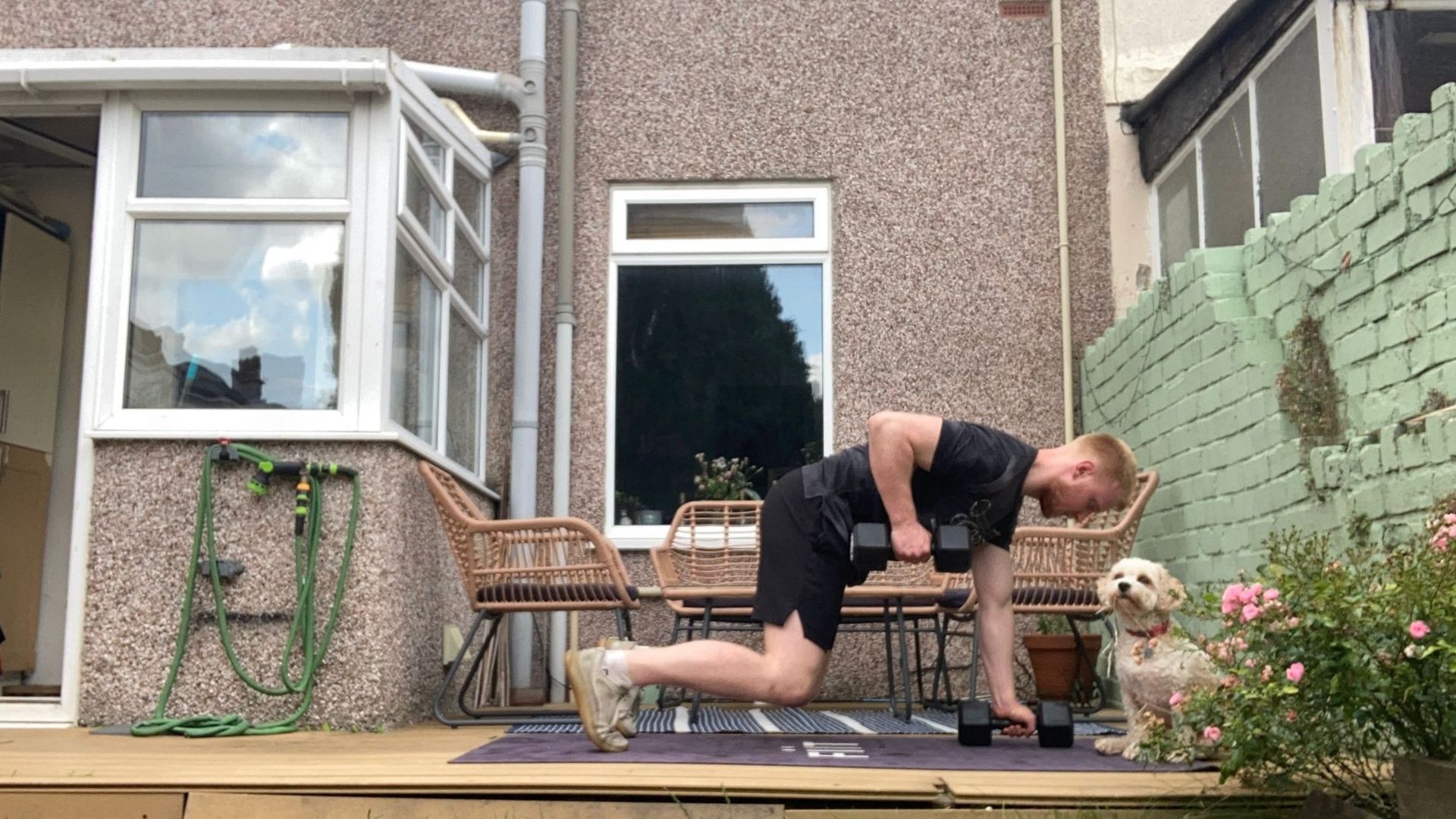I tried this four-move full-body dumbbell workout, and the results were impressive
It only took 16 minutes, but I found it fun and effective, plus it worked my core hard


Workouts can be a bit regimented; do 12 repetitions of an exercise, rest, rinse and repeat. Sound familiar? This can be effective, sure, but sometimes I feel we overlook one of the best reasons for moving our bodies: it's fun.
That's why I like this routine from fitness trainer Tanya Poppett. There are only four exercises performed four times each, but they all challenge you to move your body in new and interesting ways.
The lateral squat walk even tasks you with moving sideways (just think, how many exercises actually do that in most workout plans?). It also follows a time-based format — 40 seconds of work followed by 20 seconds of rest — rather than working to a set number of repetitions.
This means all-comers can move at their own pace and still have the whole session wrapped up in 16 minutes. Watch Poppett's demonstrations of each exercise, then warm up and try it for yourself. I did, and I was impressed.
Watch Tanya Poppett's full-body dumbbell workout
A post shared by Tanya Poppett (@tanyapoppett)
A photo posted by on
As a fitness writer, I see a lot of new workouts every day. Some are set for me by my CrossFit coach, some are detailed during chats with top coaches across the world (like this four-move core routine from Chris Hemsworth's trainer), but the vast majority are pop up on my social media feeds.
This routine was another winner in my eyes, using inventive multi-muscle compound exercises to challenge the mind and body simultaneously. It was surprisingly tricky, too. Part of that was down to my dog insisting on settling on my yoga mat, while my choice of heavy weights also played a role.
It was a challenge (in a good way)

Up first was the lateral squat walk, delivering a twist on the classic squat that was fun to get to grips with. It's a thigh burner, with your quadriceps and hamstrings under constant tension as you hold a half-squat position.
Start your week with achievable workout ideas, health tips and wellbeing advice in your inbox.
I could also feel often-overlooked stabilizing muscles in my legs easing into action as I shuffled sideways. This will be a new sensation for many, with most exercises moving within the sagittal plane (up, down, forwards, and backwards).
Next up came the side plank snatch, and this was where I really regretted my dumbbell selection. Dumbbell snatches are a regular part of my workouts; side planks make semi-regular appearances; put them together and I had something new to test myself with.
I failed to pull the 28lb dumbbell beyond my right shoulder and quickly switched it for a weight on par with Poppett's 13lbs. But I enjoyed learning something new, finding it kept boredom at bay by stopping my brain from defaulting to autopilot.
The final two moves were fun too. They, like the first two, also came with bonus core workouts. On the face of it, the knee to stand press and renegade bear rows target the shoulders, legs and back, but they also call your mid-body muscles into action to stabilize your body.
By rounds three and four I was more aware of this than ever, and my core was trembling as I powered through the final few seconds of renegade rows.
Would I do this full-body workout again?

I like to think I'm in OK shape, hitting the gym most days, but I still found this workout difficult. That doesn't mean it's inaccessible though; you can scale it in several ways to suit pretty much any fitness level.
If you're struggling with any of the movements, try lowering the weight of the dumbbells you're using, or even performing the exercises without weights. If you're exhausted after 40 seconds of effort, try working for 30, 20, or 10 seconds instead.
Even Poppett admits "last move was tough and found I needed to rock back into child’s pose a few times there." Then, as you grow stronger using the progressive overload technique, you can gradually build up to the full routine.

Harry Bullmore is a Fitness Writer for Fit&Well and its sister site Coach, covering accessible home workouts, strength training session, and yoga routines. He joined the team from Hearst, where he reviewed products for Men's Health, Women's Health, and Runner's World. He is passionate about the physical and mental benefits of exercise, and splits his time between weightlifting, CrossFit, and gymnastics, which he does to build strength, boost his wellbeing, and have fun.
Harry is a NCTJ-qualified journalist, and has written for Vice, Learning Disability Today, and The Argus, where he was a crime, politics, and sports reporter for several UK regional and national newspapers.